Antony brings us some tips for new mountain bikers (and perhaps old hands too) that he thinks will help add fun to your off road rides.
We’ve all been there. Some of us still are there. Riding bicycles off road isn’t the easiest sport to get into, and there are a few obvious beginner mistakes to avoid if you want to have fun, stay safe, and not end up walking home. Of course, everyone’s different, and some of these may not apply to you at all. You might be fine wearing a G-string under your lycra, keeping your sweaty waterproof on all the way up the first climb, or never riding more than a five mile radius from your house. But there are definitely some things we wish someone had told us when we started out. So here’s a non-exhaustive list of rookie errors that, if you can avoid them, we reckon will boost your enjoyment massively .
1. Release the pressure
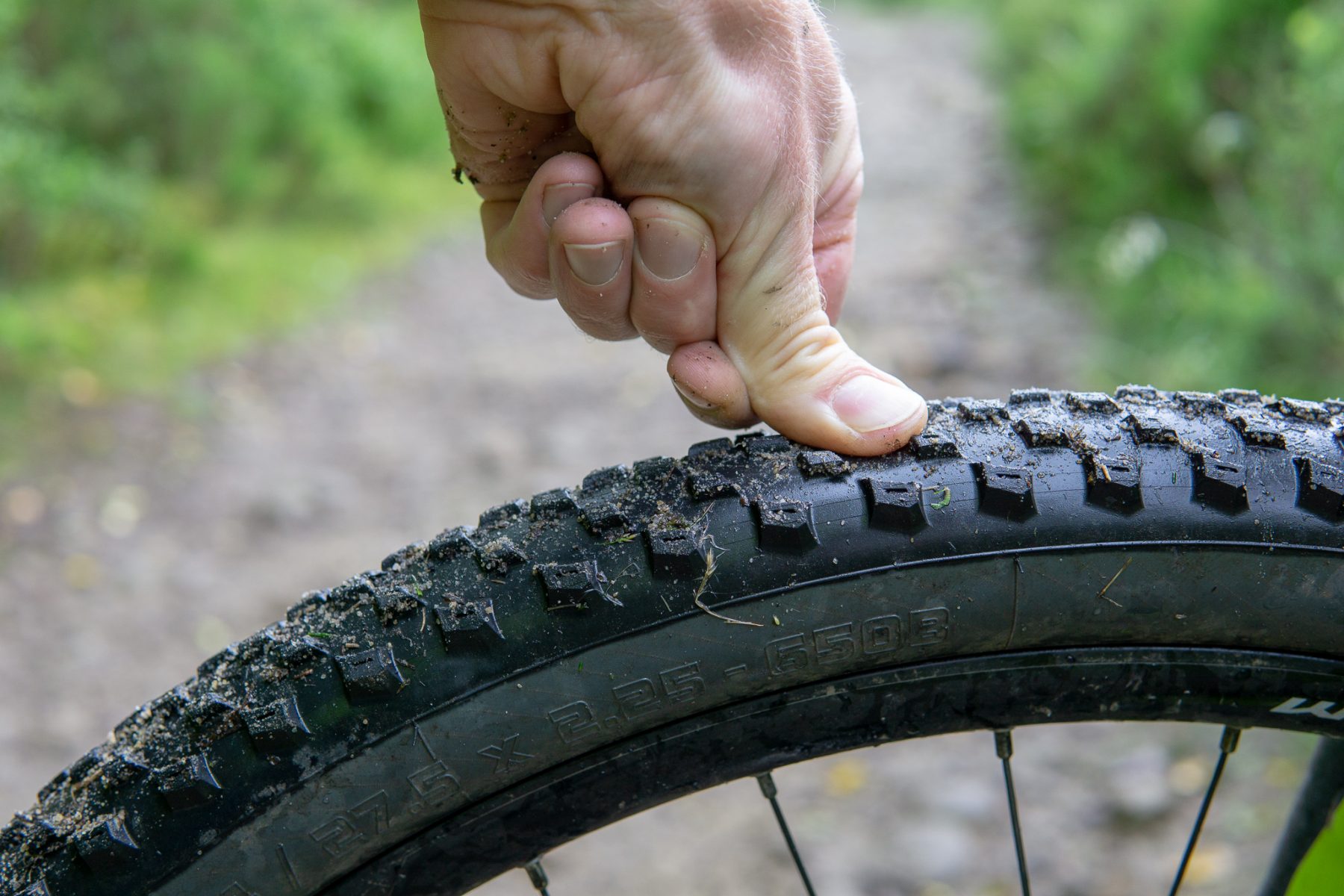
What if I told you, in the voice of Laurence Fishburne, that there’s an upgrade which you can make to your bike right now, which will make you faster up and down the trails, costs nothing, requires no extra fitness or skills, and which you can do with just one finger?
A really common misconception amongst new cyclists, especially those who’ve come from riding on the road, is that more tyre pressure equals faster riding. But the truth is a bit more complicated. A tyre needs to deform and grip if it’s rolling over uneven ground, and if it has too much air in it, it won’t do either. If you find yourself pinballing from root to rock, check your tyres, and if they’re feeling like a sausage that’s been left on a barbecue overnight, let a bit of air out.
How much? That depends on your weight, your tyres and the type of riding you’re doing. Very roughly, you want to be somewhere between 30 and 40 psi for standard non-tubeless tyres, 20 and 30 psi for tubeless, and in the mid to low teens for Plus size tyres. You’ll be faster all round – unless you mainly ride on tarmac, in which case you probably need to read on to the next tip.
- Bike Check: Jordy Scott’s Dual Slalom Haro
- Bikes Bikes Bikes! The Show Bikes of Sea Otter
- A Closer Look At The We Are One Modular Prototype DH Bike
- Martha Gill: The New Sea Otter Dual Slalom Champion
- Bike Check: Ryan Pinkerton’s Sea Otter Mondraker Raze Carbon
2. Getting stuck in a rut
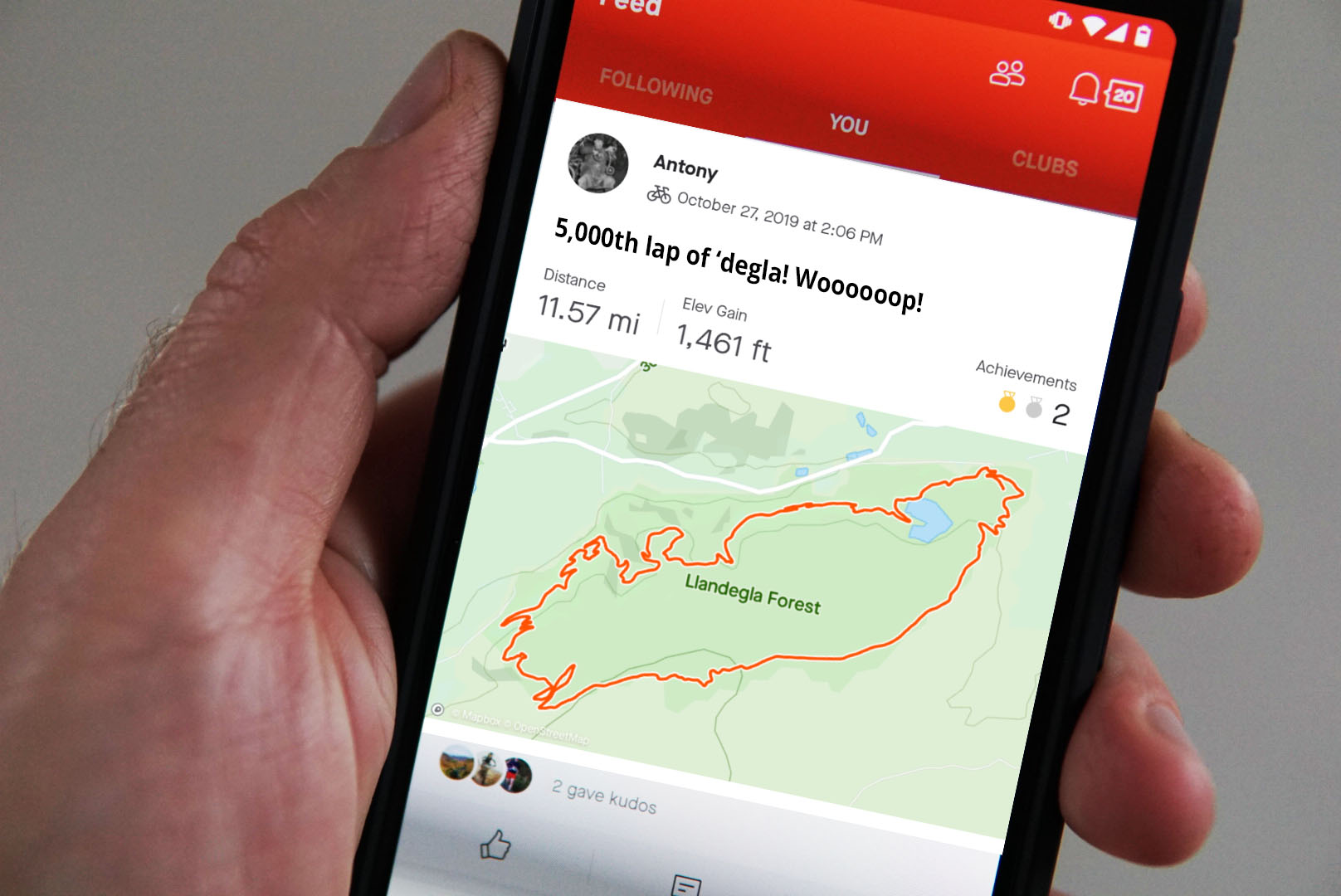
When you get into mountain biking it’s very easy to find yourself going to the same places to ride again and again. If you’re driving to a trail centre every weekend, you can end up spending as much time in a car as riding your bike. It’s worth breaking out the maps and exploring locally instead. And to flip that around, if you’ve only ever ridden from your door, going a bit further afield could open up a whole new world. There’s no such thing as the world’s best trail, and varying your riding is a great way to keep things fresh.
3. Not carrying tools
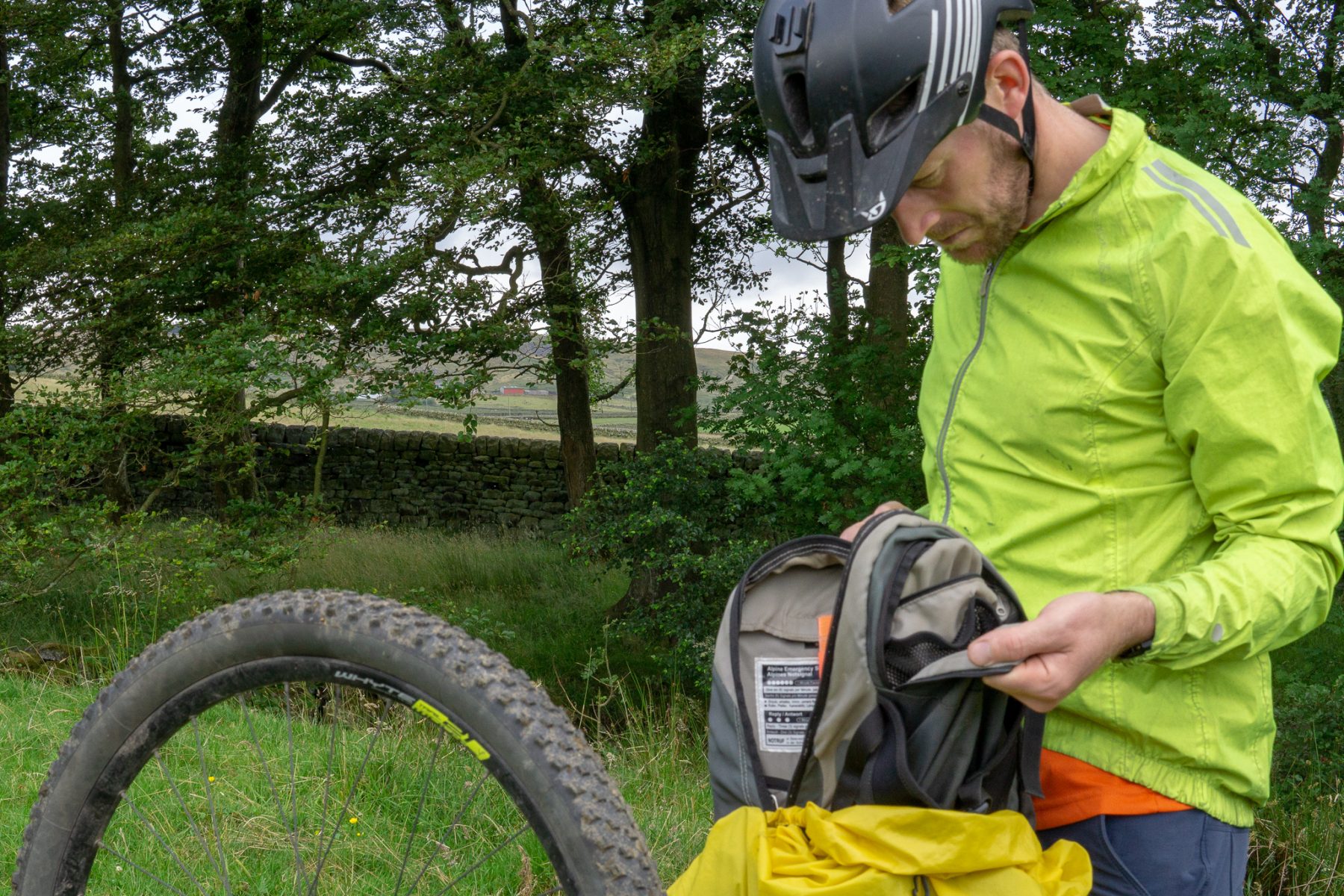
Yes, we know that loads of photos on this very website show riders merrily zipping through the woods witthout any baggage, including the sort you keep your pump and multitool in. Fine if you’re riding within sight of your house, or if your pack is just out of shot behind the photographer, but in the real world, bike rides tend to cover a fair bit of distance, and pushing back to the trailhead or home can take an absolute eternity.
At the very minimum you should have the tools with you to tighten a loose bolt, fix a flat, and join a broken chain. Borrowing them from your mates doesn’t work if they’re already at the bottom of the hill. And don’t forget about the stuff you need to look after yourself, as well as your bike. Snacks, water, a charged-up phone and a spare layer will all be missed sooner or later if you leave them out.
4. Not being able to use them
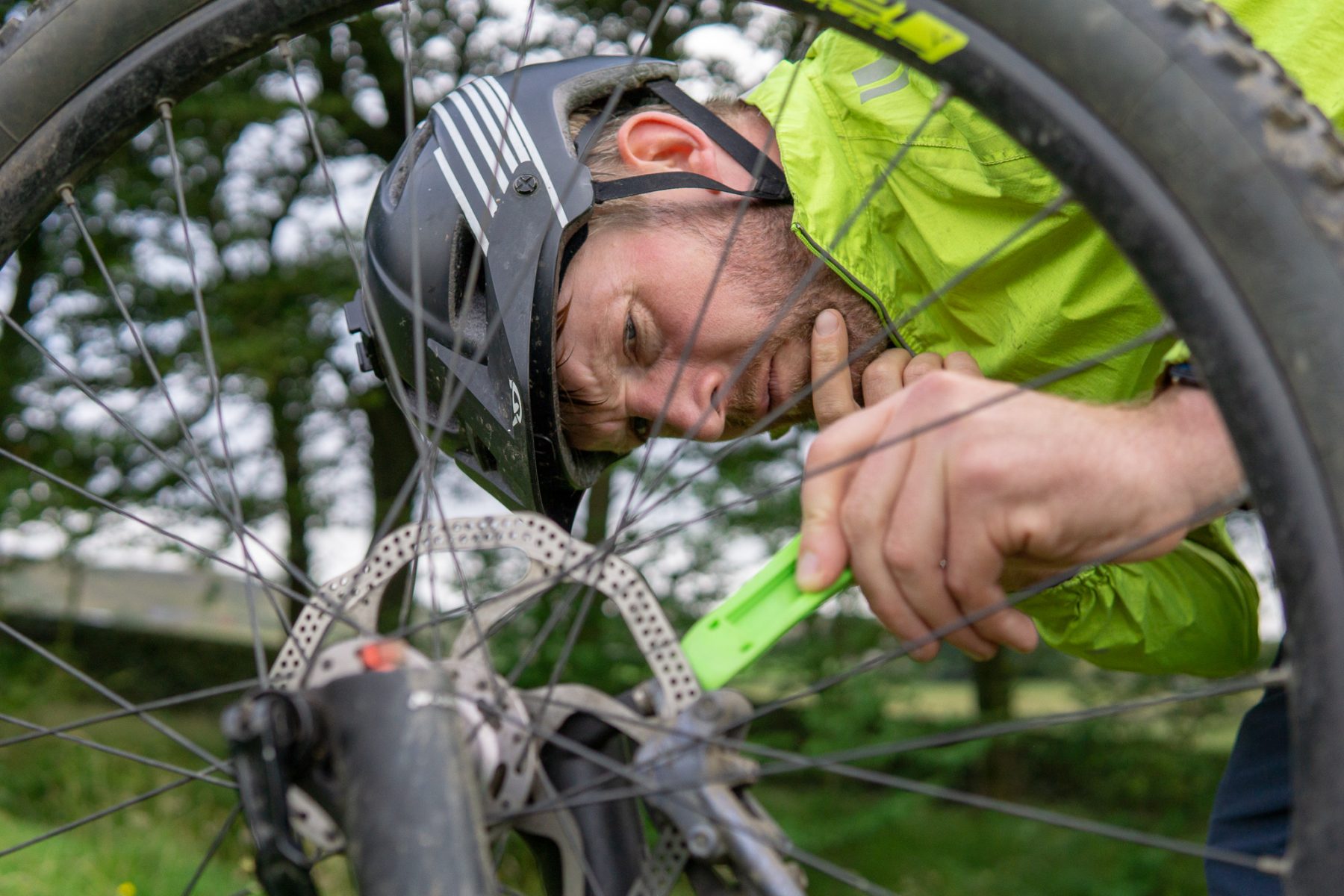
There are many minor but inevitable tragedies in life. And the one certainty with mountain biking is that at some point your steed will be stricken with an ailment that renders it unrideable. Fortunately most of these can be fixed at the trailside. But if you haven’t yet had to repair a puncture or join a broken chain, ask yourself this. Would you prefer to learn how to do this in a nice warm indoor environment, or on the side of a mountain in stinging, wind-driven rain, while your riding buddies give you evil stares and make pointed remarks about their body temperature?
5. Snubbing mudguards
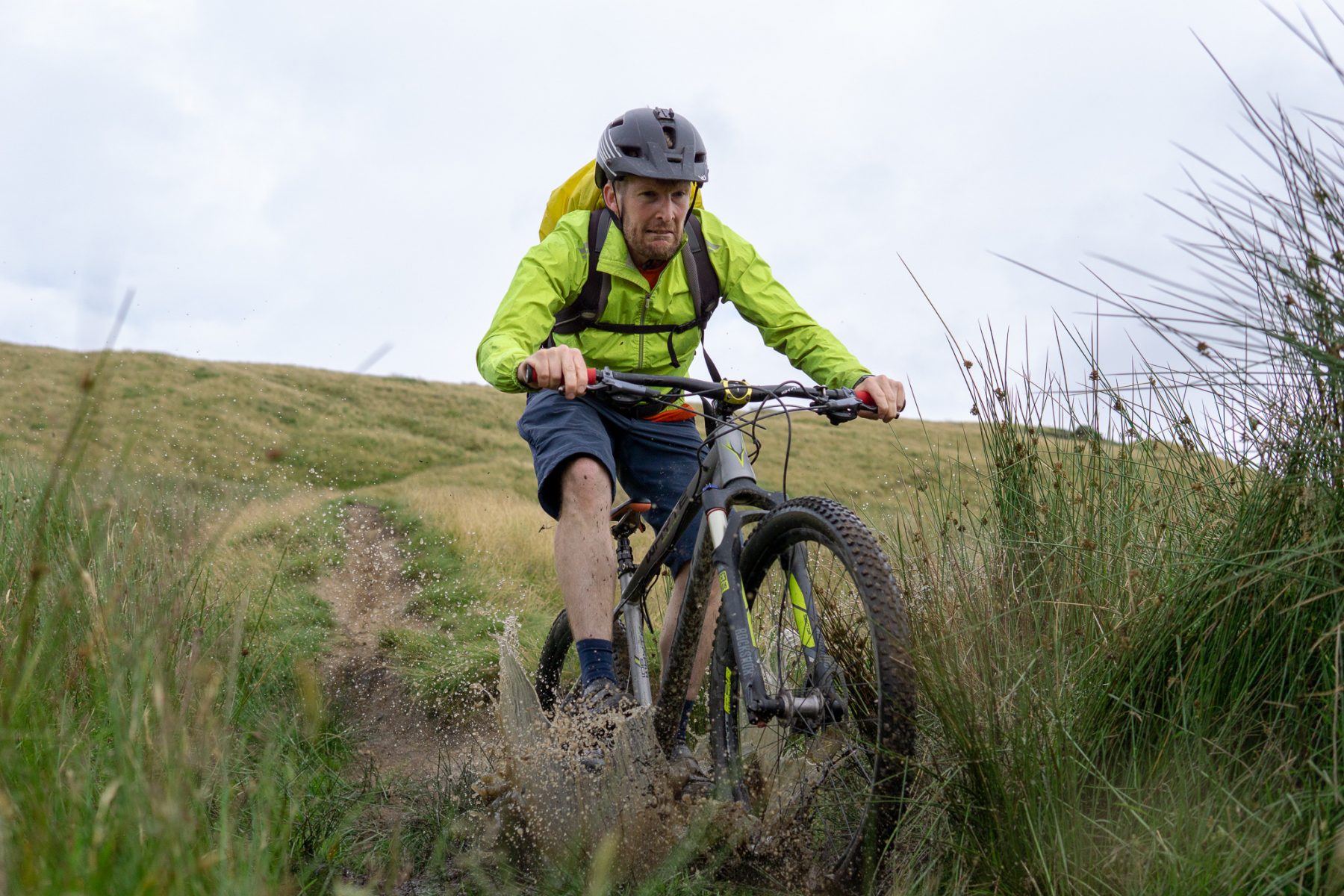
Unless you lusted after a Raleigh Vektar as a teenager, you probably don’t think that strapping or bolting bits of curved plastic to your bike improves its looks. I resisted using mudguards for years, basically due to vanity. I even coined the term “Mudhuglification” to describe the effect of one particular brand’s products on a bike’s aesthetic qualities. But no matter what you think of the way they look, mudguards are just too useful to dismiss.
Any tyre with a respectable amount of width and tread will fling more crap at your face than a zoo enclosure full of enraged monkeys. And this won’t just be good wholesome dirt either. Depending on where you ride, the excreta of sheep, cows, or even dogs could be fired into your face at high velocity. Or tiny particles of sharp grit can find their way round your riding glasses into your soft watery eyes. It’s not just about you, either. Your bike’s fork stanchions and shock shaft will appreciate not being peppered with grinding paste every wet ride. Mudguards have come a long way since the twangy abominations of mountain biking’s early days, so if you’ve had a bad experience before, give one of the newer designs a try.
6. Clipping in too soon
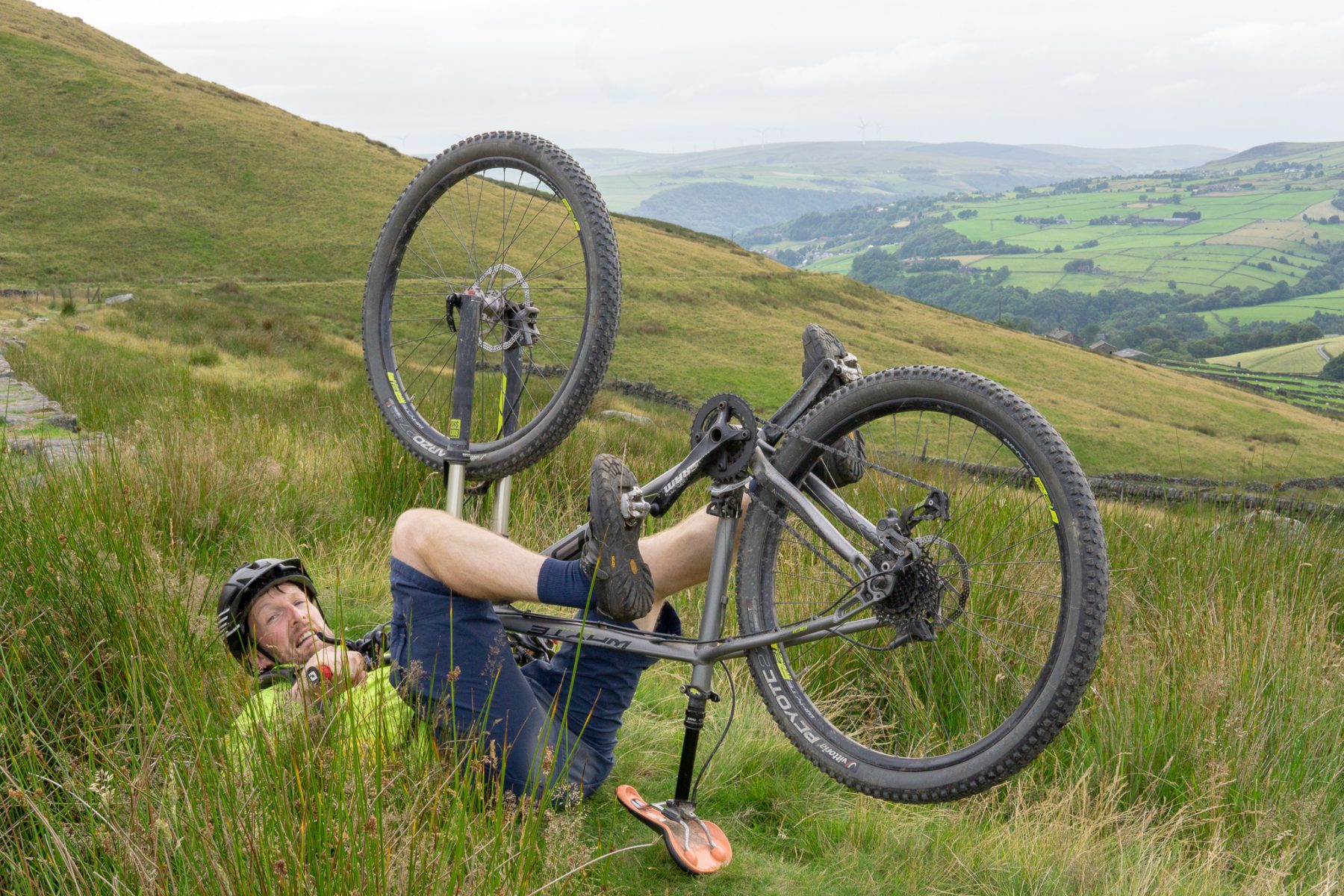
Clippy pedals are a handy, dandy thing. No losing your connection to the bike as you batter through rocks or braking bumps. Loads of light, stiff, efficient shoes to choose from. Less chance of catching a pedal on the edge of a rut, and coming to an undignified, testicle- or labia-compromising stop. So it’s not surprising that they seem to come up frequently in lists of must-haves for beginners. But where they fall down (pun sort-of-intended) is developing technique and mastering new skills.
Learning to wheelie or bunny hop is pretty hard. Trying to do these things for the first time while clipped in, riddled with the fear of ending up on your back like a cockroach in a bath, is even harder. Cheap flat pedals are leagues better than they used to be, and there’s also much more choice of good footwear. Save the clipless pedals for after you’ve got some basics sorted, and you’ll be much more confident and controlled.
7. Sitting down
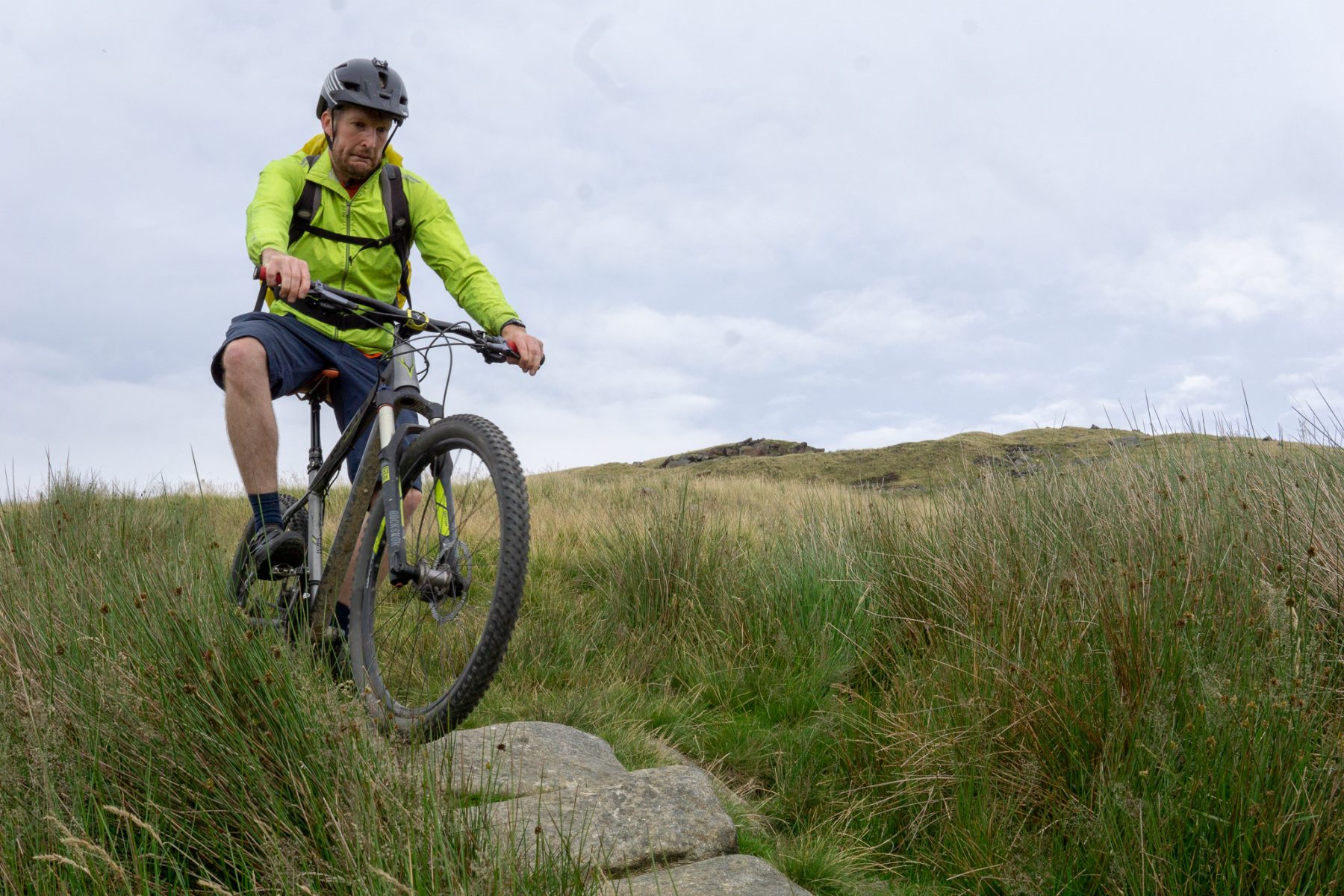
If you’ve ridden a bicycle for any length of time before you decided to venture onto dirt, you’ll probably have spent most of that time sat on a saddle. So why change the habit? The thing is, mountain biking isn’t like riding on the road. Keeping your momentum along twisty, technical trails needs some subtle and not-so-subtle shifting of your body weight, which is much easier if your saddle is out of the way. And having every bump and jolt in the trail transmitted to your arse bones, rather than being able to absorb them with your knees, is just as uncomfortable as you’d expect.
Equally as bad, in a different way, is not putting your saddle up enough when you need to pedal for any length of time. You’ll get tired quicker and could cause yourself niggling knee issues. If your bike doesn’t have one, a dropper post is a really good upgrade that’ll make sure your saddle is high enough when you need it to be, and out of the way when you don’t. There’s a reason those things have taken over the world.
8. Front brake fear
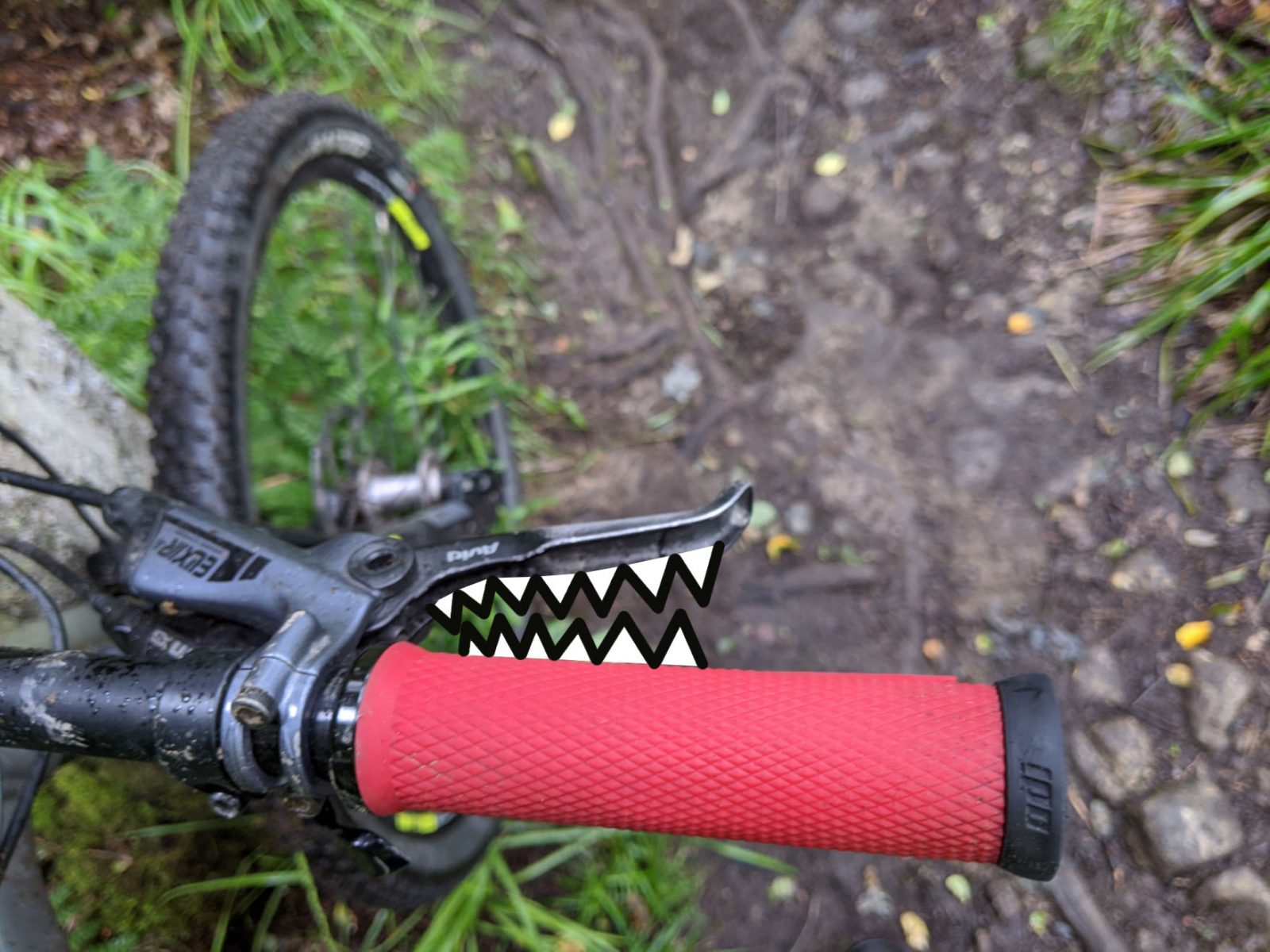
Your bike’s front brake is a bit like one of Boris Johnson’s civil servants: it does nearly all the work, and then gets the blame when the person in control messes up. Don’t believe us? Try stopping your bike with just your rear brake, then just your front, and see how much distance you cover.
Brakes are good enough these days that you can get away with overusing your back brake, even though you’ll be hammering your tyres and the trails in the process. But next time you’re riding something steep, have a bit of faith and keep your front brake firmly covered. You’ll have much more control.
9. Assume the position
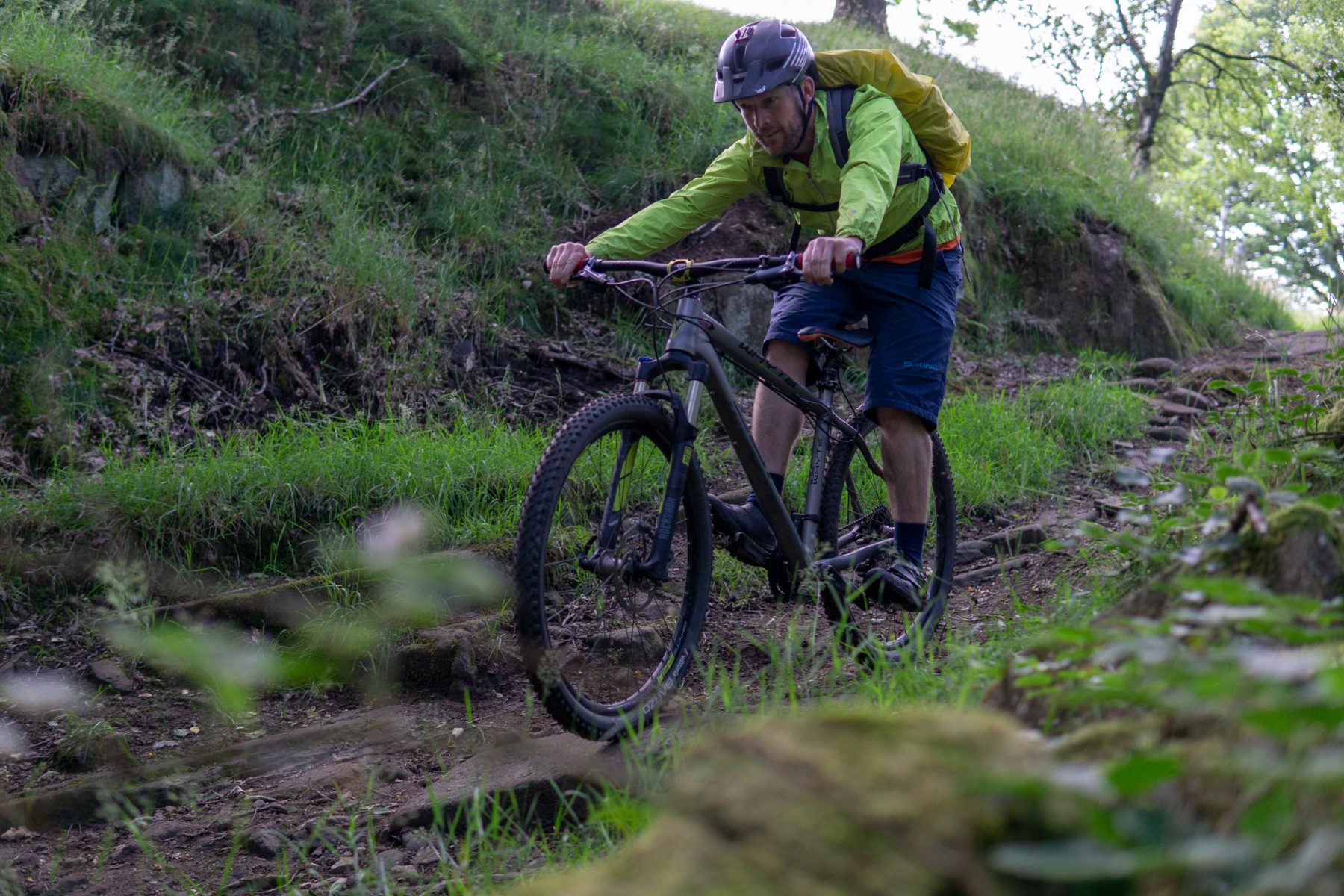
Mountain biking is very much a weighting game. Even if you’re a skinny bean, you’re still easily the heaviest part of the rider-bike combo. And where your weight is on the bike, and how it reacts as you ride along a trail, are determined to a large extent by your body position and your posture. With your pedals level, your weight low and centred and your elbows bent, you’re ready to take on anything. But if you’re already off balance, and something on the trail knocks you further off balance, things could get quite hurty. It’s not always easy to tell what you’re doing as you ride, so this is something where a bit of skills coaching can save you a load of grief further down the line.
10. Comparing yourself to other people
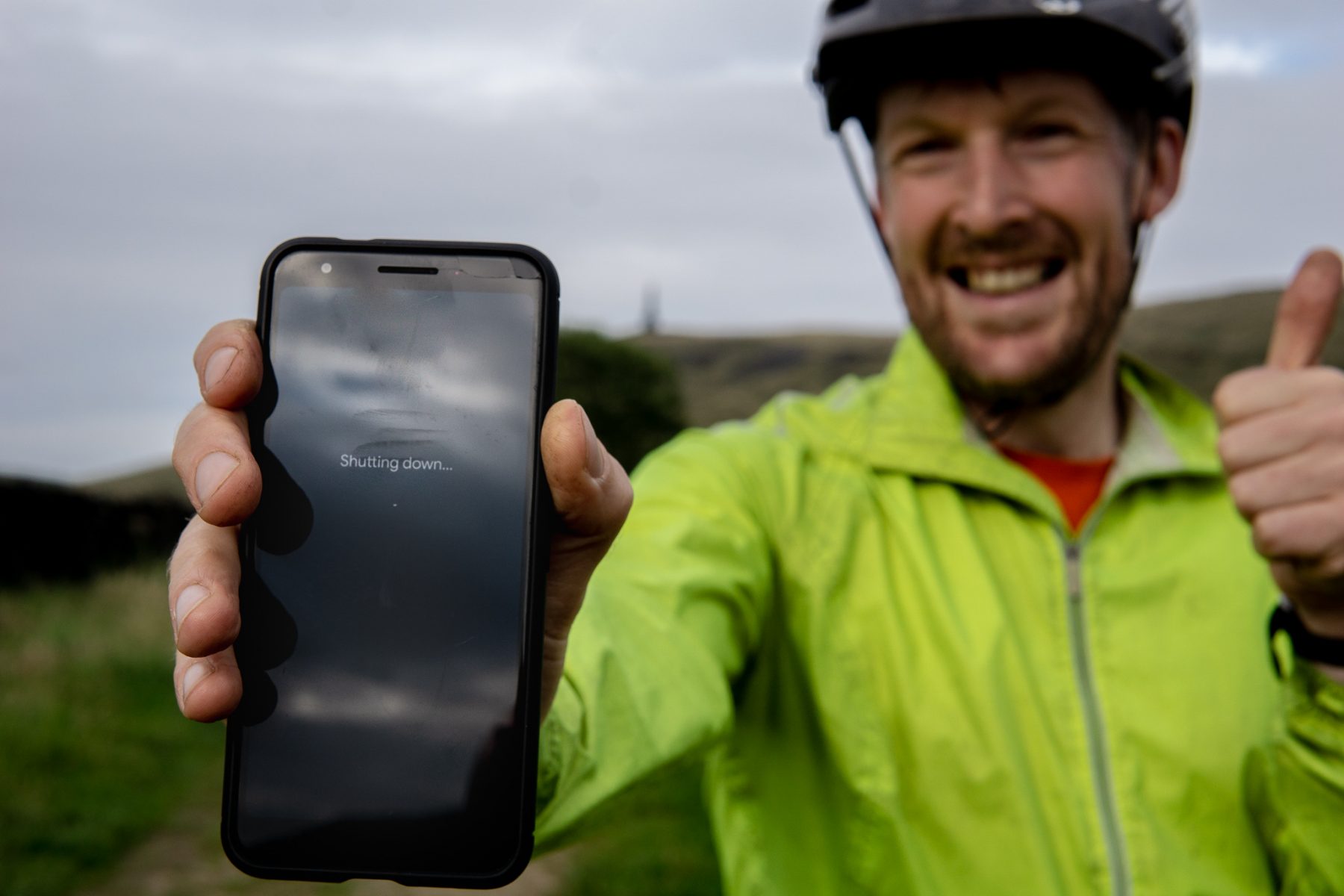
These days, we’re bombarded with information about what everyone is up to: the bikes they’re riding, the places they’ve ridden, the views they’ve seen. So it’s easy to feel a whiff of anxiety that whatever you’re doing is not as fun, not as cool, not as epic as those other people on the internet.
Is your time down that section of trail fast enough? Is your head angle slack enough? Is your post-ride beer niche enough? There are certainly people who will tell you these things, in exchange for a monthly fee. But switch off the constant comparisons, or at least make them less of a part of your life, and you might enjoy riding more, and do it more often.. It’s great to be inspired by what other people are doing, but if the first half of 2020 has taught us anything, it’s that you don’t need the most spectacular locations, the latest and greatest bike, or a daunting technical challenge for mountain biking to be a good thing.
Life is a journey, not a destination, and mountain biking is no different. Even after (counts fingers and toes) 20-odd years of it, I’m still making mistakes and finding out ways to make it more fun and fulfilling. If you’ve got a pearl of wisdom that you’d like to share then post it below. Something that might seem obvious to you might be a life-changing revelation for someone else.
Comments (8)
Leave Reply
Post Comment
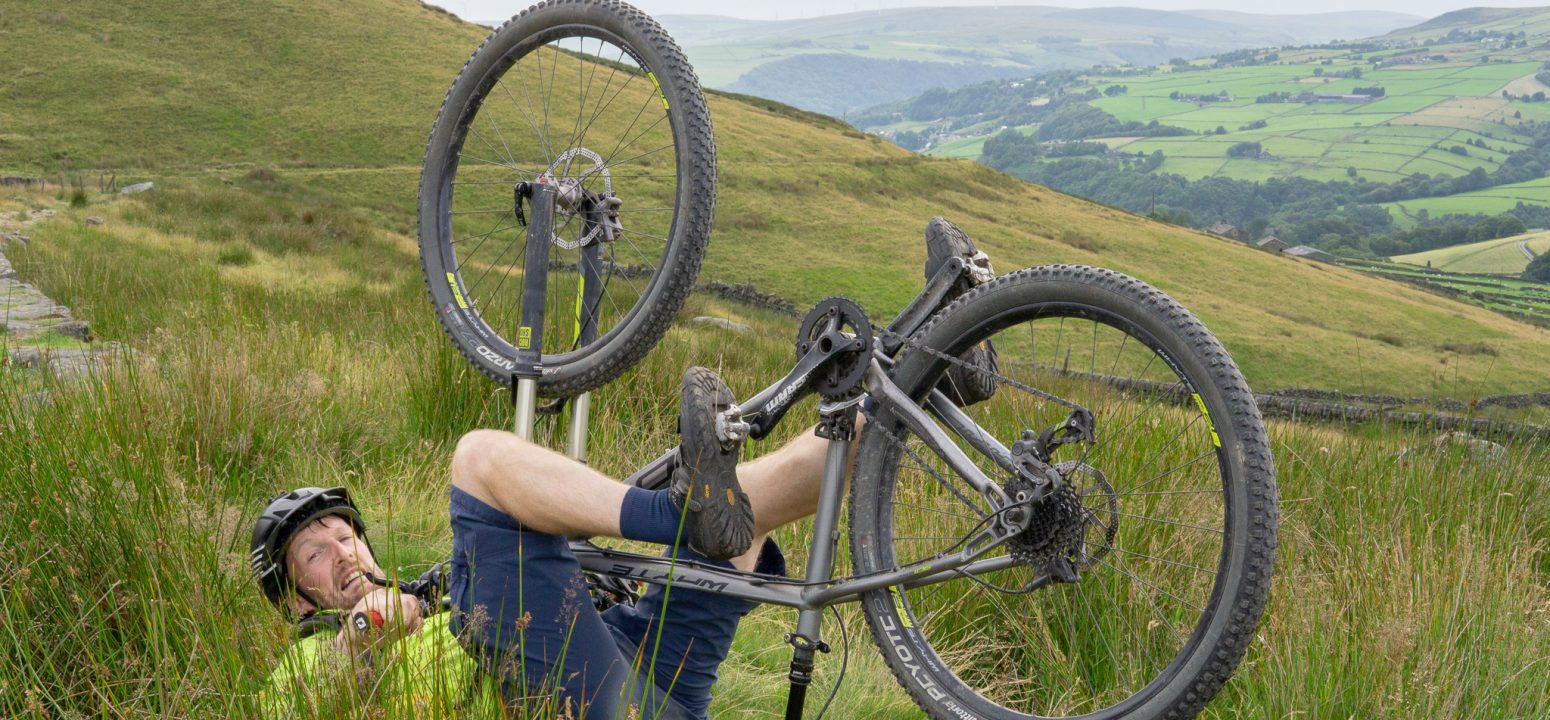
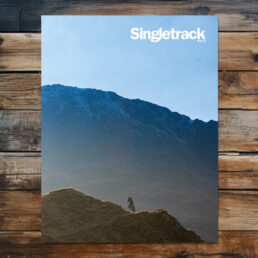
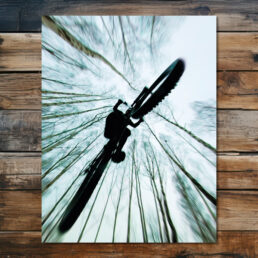
That’s so true in so many ways. Even those of us that consider ourselves experienced benefitted from reading that. Top tips Anthony! (I’m off to let some air out of tyres now…..)
Agree with number 10. Sometimes it’s hard to stomach someone else’s “perfect” riding life when you’re stuck at a desk all day. But you can make plans for adventures whilst making the most of what is around you.
Entertaining read, good to reminisce, I remember the time when….. we all have a story to tell the grandkids. Still making some of the beginners mistakes though after 20 years of riding
That is a great article. Wise words indeed, AdH. *thumbsup*
Good selection of practical advice most of which I was lucky to learn from riding in a group when I started. I’m still surprised how many people still ride without tools and are relying on others to help them if they get stuck, getting a little backpack to carry some tools, clothing for a change in weather and some food isn’t a noticeable weight but so handy to have,
People were good helping with tyre pressure but I think it was after some trouble with punctures I thought how much difference can it really be and pumped the tyres nice and firm. The bike rocketed along the canal path then was all over the place once we hit technical features so needless to say never done that again.
All true and all relevant even to us old timers who have been riding a while. Cheers AdH
I Don’t get #10.
The guys and gals I rode with already know where I went. Because they were with me.
Anyone else ? Ballyx to them knowing where the great trails are and what they’re missing. They should have got off their asres and ridden with us.
Good article. Maybe it could be posted and pinned to a “So You Just Started MTBing” thread on the forum?